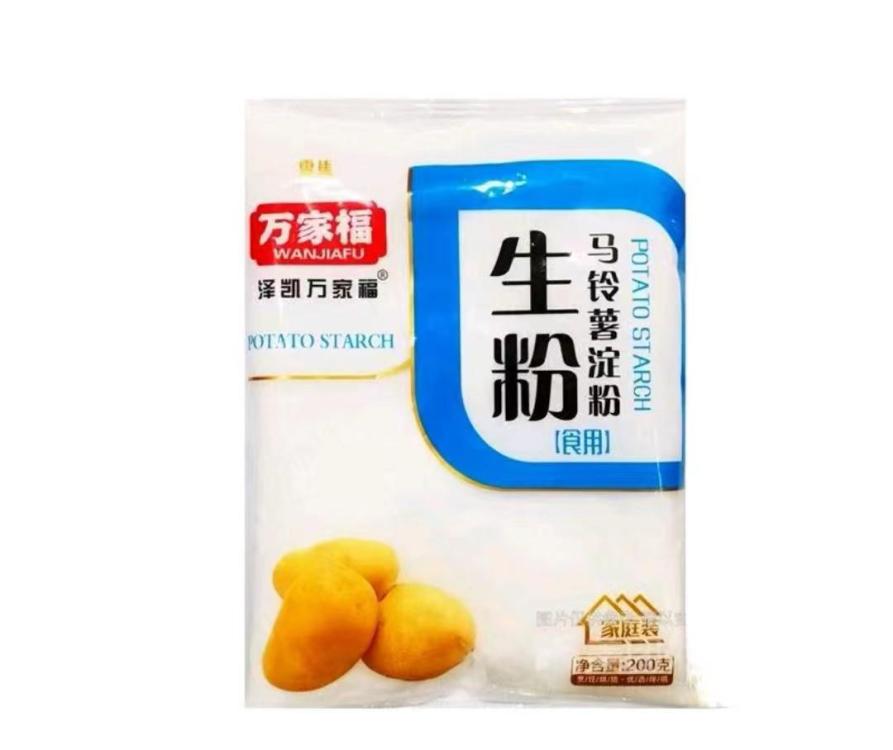Here, I am looking at (C6H10O5)n, a polysaccharide comprising glucose monomers joined in α 1,4 linkages. Extracted from the roots, tubers or seeds of various plants this tasteless white powder is used in kitchens worldwide to thicken sauces, tenderise meats and coat foods to be fried. Its friends call it S: 淀粉; T: 澱粉 (diàn fěn) or starch.
The most common is found as 玉米粉 (yù mǐ fěn) in Chinese 🇨🇳, cØrn starch in American English 🇺🇸 or cØrnflour in British English 🇬🇧 and is widely available both in the west and in China. However, cØrn is far from the only source.
I always use S: 马铃薯粉; T 馬鈴薯粉 (mǎ líng shǔ fěn) or 土豆粉 (tǔ dòu fěn), potato starch, as do the Sichuanese.
S: 木薯淀粉: T: 木薯澱粉 (mù shǔ diàn fěn), tapioca starch, made from cassava, is used some places as are 葛粉 (gé fěn) Pueraria montana, kudzu or 竹芋 (zhú yù), Maranta arundinacea, arrowroot.
Tapioca Starch
Kudzu Starch
Anonymous starch is also sold as 生粉 (shēng fěn) often also labelled in English "Edible Starch". This is sometimes cØrn but there are no guarantees. The cØrn starch pictured above is labelled as both 生粉 and 玉米 meaning, cØrn.
The above starches are also used to make noodles as are rice starch and S: 绿豆粉; T: 綠豆粉 (lǜ dòu fěn), mung bean starch.






